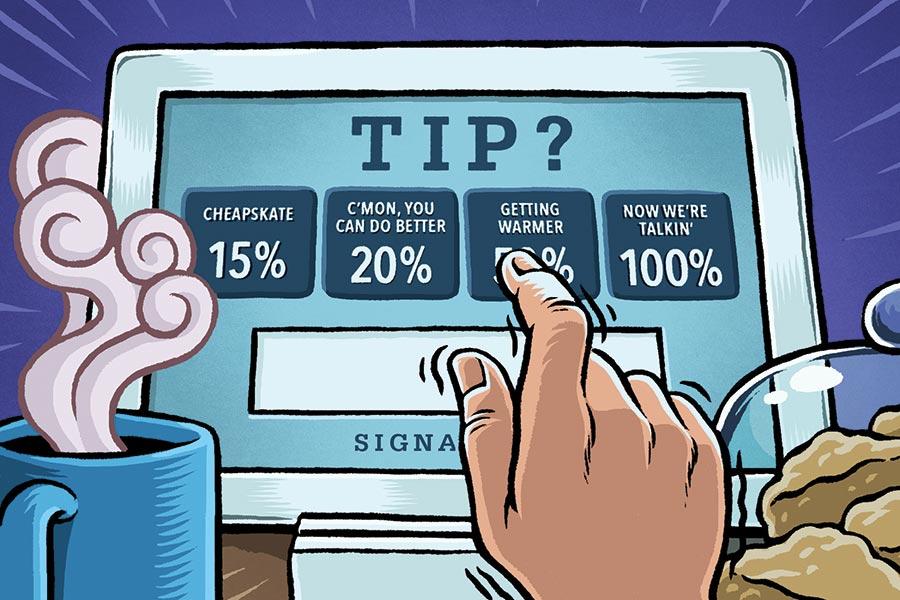As the cost of living continues to rise and wage growth fails to keep pace, the act of tipping-a longstanding custom in the service industry-is increasingly becoming a source of anxiety and confusion for consumers and workers alike. In today’s economy, what was once a straightforward gesture of appreciation now feels uncertain and overwhelming, with evolving social expectations, digital payment methods, and economic pressures reshaping how and when tips are given. This article explores the complex factors driving why tipping feels out of control in the current financial landscape, examining its impact on both patrons and service employees.
The Rising Cost of Living and Its Impact on Tipping Expectations
As inflation continues to outpace wage growth, consumers are feeling the squeeze on their disposable income, making tipping a growing point of contention in everyday transactions. What was once considered a generous reward for good service is increasingly viewed as a mandatory expense-one that many feel compelled to meet despite tightening budgets. The rising prices of essentials such as groceries, rent, and utilities leave less financial flexibility for discretionary spending, forcing patrons to reassess expectations around gratuities at restaurants, bars, and other service-oriented establishments.
Service workers, meanwhile, often rely heavily on tips to supplement lower hourly wages, placing them at the heart of this economic tug-of-war. This dynamic has sparked debate on both sides about fairness and financial strain. Key factors shaping this evolving landscape include:
- Regional cost-of-living differences influencing standard tipping percentages.
- Service industry labor shortages intensifying demand for higher tips as a form of compensation.
- Shift toward digital and contactless payments, which can encourage larger or more frequent tips.
| Expense Category | 2020 Average ($) | 2024 Average ($) | % Increase |
|---|---|---|---|
| Groceries | 320 | 470 | 47% |
| Rent | 1,200 | 1,550 | 29% |
| Utilities | 150 | 210 | 40% |
| Average Tip (per meal) | 4.50 | 6.75 | 50% |
How Wage Stagnation Shifts the Burden to Customers
In an economy where wages have largely plateaued for years, service workers increasingly rely on tips to bridge the gap between earnings and living expenses. This wage stagnation places the onus on customers to compensate for what employers are not paying in adequate base salaries. As a result, consumers find themselves in an uncomfortable position-bearing the financial responsibility for labor costs that traditionally were embedded in menu prices.
Key impacts of this shift include:
- Unpredictable expenses: Customers face variable tipping expectations that can feel arbitrary and stressful.
- Hidden cost inflation: Rather than direct price hikes, increased tipping effectively raises the cost of dining out or receiving services.
- Pressure on spending decisions: Many consumers may cut back on outings or opt for tipping-free alternatives to manage household budgets.
| Year | Average Hourly Wage (Inflation Adjusted) | Average Tip Percentage |
|---|---|---|
| 2010 | $14.50 | 15% |
| 2020 | $14.75 | 18% |
| 2023 | $14.80 | 20% |
Strategies for Fair Tipping Practices in an Unstable Economy
In the face of economic volatility, adopting clear and consistent tipping guidelines can help both consumers and service workers navigate expectations more confidently. Establishing transparent policies within businesses, such as fixed percentage ranges or predetermined service charges, reduces confusion and ensures equitable compensation regardless of fluctuating prices. Consumers can also benefit from educating themselves on localized tipping customs and considering the broader economic context that impacts service workers’ wages.
To strike a balance between generosity and fairness, patrons are encouraged to:
- Adjust tips based on quality and effort rather than a flat rate, acknowledging exceptional service even in tough times.
- Use digital tools or apps that calculate tips automatically, tailored to the current economic climate or service type.
- Support venues with fair labor practices by tipping more modestly when in-house policies guarantee living wages.
| Economic Factor | Suggested Tipping Approach |
|---|---|
| Inflation Surge | Increase tip by 1-2% |
| Service Industry Wage Raises | Tip at lower end of standard range |
| High Unemployment | Maintain customary tips, emphasize quality service |
Closing Remarks
As debates around tipping continue to unfold, it is clear that the practice remains a complex and evolving aspect of today’s economy. With rising living costs and shifting labor dynamics, both consumers and workers find themselves navigating an uncertain landscape where generosity and obligation often collide. Understanding the economic pressures at play is essential as policymakers, businesses, and communities explore more equitable solutions to support service industry workers without placing undue burden on diners. The conversation about tipping is far from over, but grasping its challenges is a crucial step toward fostering a fairer economic system for all.
